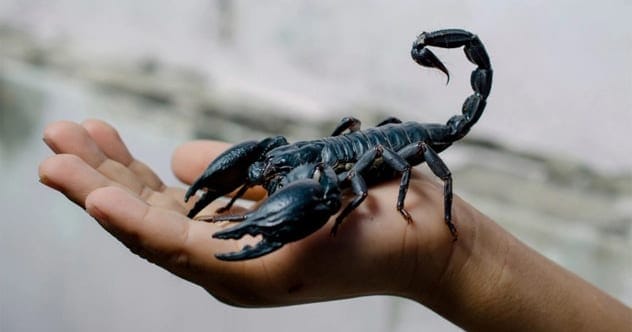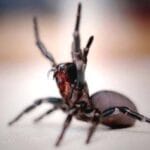Insects are some of the most adaptable creatures on Earth. Often seen as creepy, they possess a remarkable range of defense mechanisms, survival tactics, and unique appearances. While you might be familiar with common house flies or ladybugs, the insect world holds far stranger beings with wild evolutionary adaptations designed to fend off predators, find food, and reproduce.
Let’s explore ten of the most fascinating and strange survival strategies insects have evolved.
Defensive Odour—Stink Bugs
Stink bugs are known for releasing a horrible odor when threatened. This defense mechanism works so well that many widespread species of stink bugs are considered invasive. Scientists have even considered introducing wasps to control these populations. The stink bug’s ability to produce a foul smell makes it a survivor in various environments.
Sexual Cannibalism—Praying Mantis
The female praying mantis is infamous for eating its mate after reproduction. This act, while seemingly cruel, provides the female with a vital meal to sustain herself while laying eggs. Studies indicate that females who cannibalize their partners lay significantly more eggs, and the nutrients from the male benefit the offspring. This behavior ensures the survival and propagation of the species.
Defensive Vomit—Pine Sawfly Larvae
Pine sawfly larvae have a unique defense mechanism: they vomit at predators. Banding together in groups, they ward off threats through collective repulsion. Surprisingly, some larvae avoid contributing but still benefit from the protection, acting as freeloaders. This tactic, while effective, weakens the larvae, reducing their chances of survival. Pine sawfly larvae are also considered pests because they consume pine needles, severely damaging trees.
Pit Viper Caterpillar—Hawk Moth
Hawk moth caterpillars mimic snakes as a survival tactic. These caterpillars can change colors and, when threatened, puff up to resemble the head of a pit viper. Although harmless, their disguise is convincing enough to deter predatory birds and even humans. This mimicry provides an effective way to avoid becoming prey.
Washing Children With Poison—Ants
Ants maintain colony hygiene by cleaning their young with poison. To prevent disease outbreaks, they suck poison from their acidopore and drool it over their larvae to destroy harmful fungi. This behavior, though unappealing, effectively prevents the spread of disease within the colony, ensuring survival.
Glowing Cockroach—Lucihormetica luckae
Lucihormetica luckae is a cockroach species that glows green in the dark, with a dark spot resembling a skull-like face. Scientists believe this bioluminescence mimics the poisonous click beetle, providing a defense mechanism against predators. This strange adaptation allows the cockroach to survive by appearing dangerous.
Sweet ‘Vomit’—Bees
Honey is essentially regurgitated nectar stored in a bee’s honey stomach. This sweet substance serves as a long-lasting food source, especially during winter when flowers are scarce. Honey’s antibacterial properties make it ideal for long-term storage, benefiting both bees and humans alike. So, whether you call it bee vomit or bee spit, honey is vital for survival.
Scorpion Tail Genitals—Scorpion Fly
The scorpion fly features a scorpion-like tail, which is actually the male’s genitalia used for mating. Male scorpion flies often present gifts, like dead insects or saliva, to the female during courtship. This unique adaptation and behavior contribute to their reproductive success.
Hummingbird Insect—Hummingbird Moth
Hummingbird moths closely resemble hummingbirds, sharing the ability to hover and feed in a similar manner. This is a prime example of convergent evolution. These moths are efficient pollinators and are found in various parts of the world. Their hummingbird-like traits make them a fascinating sight.
Exploding—Bombardier Beetle
Bombardier beetles can release a burning-hot, foul-smelling liquid to kill other insects and drive off predators. This explosive defense mechanism involves ejecting a boiling 100°C liquid, powerful enough to incapacitate animals and cause burns on human skin. This incredible adaptation makes them a formidable insect.
Insects have evolved some truly bizarre and effective survival strategies. From chemical defenses to mimicry and cannibalism, their adaptations highlight the incredible diversity and ingenuity found in the natural world.
Which of these survival tactics did you find most surprising? Leave your comment below!










